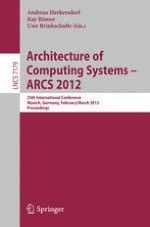2012 | Book
Architecture of Computing Systems – ARCS 2012
25th International Conference, Munich, Germany, February 28 - March 2, 2012. Proceedings
Editors: Andreas Herkersdorf, Kay Römer, Uwe Brinkschulte
Publisher: Springer Berlin Heidelberg
Book Series : Lecture Notes in Computer Science
